Picture this: Crickets lull you to sleep as a cool breeze flows through your tent windows, a cloud-like sleeping pad cushions your tired muscles with much-needed support and a down comforter hugs your aching body after a long day on the trail.
Catching some solid zzz’s in nature can be one of the most rejuvenating and relaxing experiences outdoors. The problem is, until you’ve perfected your camping sleep system, you may struggle to find comfort while camping. That’s why we talked with outdoor experts to get their advice on how to get a good night’s sleep at camp, whether you’re deep in the backcountry, at the campground during cold weather, or in your very own backyard.
Piece of advice number one: “Before you head out on your adventure create a camping mindset, be ready to roll with the outdoor punches,” says Johnny Molloy, an outdoor author with over 85 camping, hiking, and paddling guides to his credit, including “Top Trails Great Smoky Mountains National Park.” “Sleeping in the great outdoors isn’t going to be like your bed at home — and that is the point. It’s a new adventure.”
The biggest key to sleeping comfortably outdoors is mastering your sleep system, a.k.a. your sleeping pad and sleeping bag combination. Pairing two pieces with adequate temperature ratings will majorly impact your ability to stay warm, comfortable and safe at night.
“Having a good sleep system is so important,” says Emily Ford, a winter adventurer and thru-hiker who, with her Alaskan Husky, Diggins, has completed many thru-hikes in the Midwest including the 1,200-mile Ice Age Trail. “It is one of the times where I really look at the brands before buying. The pricier brands are, generally the more true to their temperature ratings. If you can save up the money for a great bag, your trip options are limitless.”
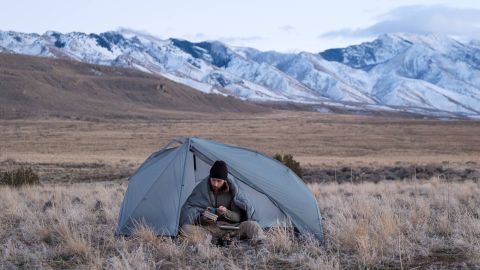
Before you buy anything, figure out what kind of camping you’ll be doing. Are you backpacking or car camping? What temperature ranges will you be in? How much precipitation will there be? All these factors can greatly affect what sort of things you end up buying.
Sleeping bags are an essential piece of gear for enjoying a night outdoors. Down and synthetic insulation are the most common fill you’ll find in sleeping bags — and each provides varying levels of warmth, protection from damp conditions, and comfort while sleeping.
But before you get set on fill, Molloy says finding a bag that actually fits your body should be the number one priority. “Make sure your sleeping bag fits your frame,” says Molloy. “I’ve seen children lost inside bags too big for them and tall campers with their shoulders exposed to chill air, and wide campers unable to zip their bags up,” he says. “Make sure your bag fits you and your sleeping pad is wide enough for your body.”
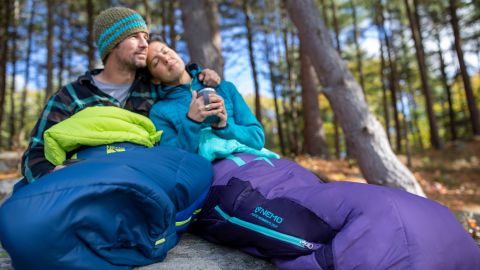
Temperature ratings are the next thing you’ll want to check. To ensure comfort, a good rule of thumb is to use a bag with a rating at least 10 degrees higher than the coldest night you plan on sleeping through. However, finding the right temperature rating for a bag can be different for everyone. “Some folks are also naturally hot sleepers and might use a cooler degree sleeping bag than you,” adds Ford. “Remember that sleeping bags do not warm you up, they insulate you. If it is really really cold out, you can throw boiling water into a Nalgene and put that in your sleeping bag too.”
There’s a lot to consider before splurging on a sleeping pad — from choosing the appropriate R-Value (temperature rating) to selecting the type of material to find your preferred thickness. Without a pad you feel comfortable and warm on, you risk a restless night, which will lead to hard days on the trail or at the campground.
Sleeping pad R-values tend to range from 1 – 7: Warm weather camping typically calls for R-values between 1 – 3; Shoulder season camping in the spring and fall calls for 3 – 5; Winter camping typically requires an R-value of 5 or more.
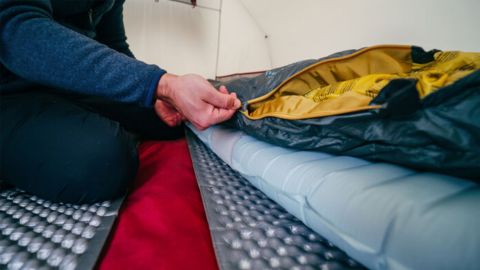
Material and thickness depend on personal preference for how soft of a sleep you’re hoping to get outdoors. Self-inflating pads usually have an added layer of foam or padding inside, which adds extra comfort but more weight. Inflatable pads have an air chamber that requires manual inflation but allows you to compress them down small for backcountry adventures. “I’m a curvy human and I like to have a good sleeping pad under me,” says Ford. “When I started out, I used a closed-cell foam sleeping pad since that was all I could afford at the time. It didn’t take me too long to realize that I should save up for a thicker, inflated sleeping pad!”
Hardcore campers might tell you pillows are non-essential, but if you value your sleep, you’ll be happy you packed one. If you’re concerned about weight, spend a little extra on a backpacking-friendly pillow like the Nemo Fillo Elite. If you have all the space in the world, opt for a pillow that promises a luxury sleep, like the Nemo Fillo King or just take one from your bed.
“If you are only going to do one thing bring a pillow,” says Molloy. “It is the single thing less experienced campers can add to make a difference between a blissful night under the stars or a nightmarish hell of discomfort, flipping and flopping through the endless dark.”

Ford, who tends to have to balance the weight in her pack carefully while on long-distance adventures, often opts for a makeshift pillow. “If a pillow is important to you, think about how you can use your pack or clothes as a pillow, or buy a traveling pillow,” she says.
Camping tents are an obvious choice for shelter and there are lots to consider when picking out a tent that will meet your needs — from seasonality and material to weight and price point. But Molloy says hammocks also have a hardcore fanbase and are a popular (and comfortable) option.
“Hammocks can be more comfortable if the weather is mild, but often hammock campers sleep colder simply because they are exposed to the night air all around their bodies,” says Molloy.

Depending on your personal preference and comfort level in colder temperatures, hammock camping could a great option for you. Avid winter campers like Ford say that with the right setup while hammock camping, you’re bound to stay warm (and comfortable) overnight.
“Even in the winter, I find camping in the hammock is a great way to go,” says Ford. “When camping in the Boundary Waters in Northern Minnesota in sub-zero temps, I had a warm bag inside my hammock and wasn’t on the ground, so my body felt great as well.”
“For me, the most important thing in terms of comfort, especially when it comes to cold weather camping, has been my base layers,” says Shilletha Curtis, the first lesbian Black woman to complete the Triple Crown of hiking, an author, professional thru-hiker and outdoor influencer who goes by her trail name “Dragonsky.”
Base layers, or the layers closest to your skin, help wick away unnecessary moisture and sweat. Merino wool, synthetic (polyester) and fleece base layers are the most common type of materials you’ll find in base layer options. Having high-quality base layers can be a huge factor in helping keep you warm and dry throughout the night. And if you get cold at night, don’t be afraid to throw on a mid-layer or even your rain jacket to help stay warm.
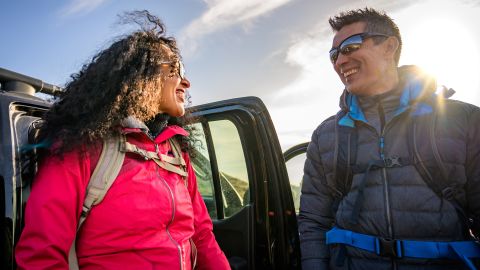
“If you are sleeping in cold weather, it’s also important to remember that you will be warmer if your clothes are dry — you sweat more than you think on the trail,” adds Ford. “I change my socks as often as possible. I would also recommend changing your base layers before bed too.”
Before you layer up and go to bed, Dragonsky also says it’s important to consider your nutrition, like having a hearty meal before you go out on an adventure and right before bed. Your body will thank you for the extra calories to fend off the cold. “While all of these pieces of advice work together as a whole, eating is really important because you have to have body fat to keep you warm overnight,” says Dragonsky. “Staying hydrated is also really important so that you don’t get hypothermia, especially at higher elevations.”
Her final piece of advice: Use the bathroom before you sleep. “When you’re sleeping, your body actually focuses on using energy to keep your bladder warm,” says Dragonsky. “That’s why it’s important to go to empty your bladder before bed so you conserve energy for other parts of your body to stay warm throughout the night.”
Test out your gear beforehand
“I highly suggest getting to know your gear, and understanding if you’re a warm sleeper or cold sleeper and making adjustments before you go out so you don’t suffer,” says Dragonsky. “When I was testing out my sleeping gear before hiking the Appalachian Trail, I tested it by sleeping in my backyard at night. If I was too cold or hot, I would go back in and then figure out the next day what I needed to adjust.”
Molloy also recommends borrowing sleeping pads from friends to test them before you buy or checking if your local outdoor retailer offers sleeping pad rentals. That way, you can test various makes and models before you dole out cash on a big purchase for a potential sleeping pad you may not end up feeling comfortable on.
“It’s important to test out different camping methods and don’t be afraid to use a sleep system that is different than everyone else — your body is different than mine,” says Ford. “All that being said, once you dial in your sleep system and start getting good sleep, you won’t want to go back indoors!”
If you’re camping on a budget, the Therma-a-Rest Z Lite is a low-entry price point sleeping pad. What you gain in savings, you lose in comfort. This pad is mostly used by backpackers or as an added layer of insulation under an inflatable sleeping pad. “I generally use the Therm-a-Rest Z Lite together with the Big Agnes Rapide SL for more warmth,” says Ford.
This cold-weather sleeping pad provides durability, packability and insulation on the trail. Ford uses this sleeping pad on most of her winter weather adventures, paired with a closed-cell foam pad underneath. Big Agnes designed this pad with a quilted top for extra warmth and cushion, and its 3.5-inch air chamber and 4.25-inch outer chamber baffle help keep you nestled in the center of the pad so you don’t slide off at night.
“I highly, highly, highly recommend the Therm-a-Rest NeoAir XTherm if you’re looking for a winter sleeping pad,” says Dragonsky. “It’s extremely warm and has one of the highest R-values of winter pads, which is the warmth rating system for sleeping pads. It’s also pretty thick and even though I have a bad back I sleep like a baby on it. If you sleep cold or need extra padding in general, it’s the sleeping pad to go to.”
An ultralight and ultra-packable sleeping pad that doesn’t cut back on comfort — even with how lightweight it is. Designed with Therm-A-Rest’s proprietary ThermaCapture insulating technology, it performs extremely well in cold weather by helping radiate body heat and reduces the cold from seeping in underneath the pad.
“Over the years I’ve stuck with Thermarest,” says Molloy. “They are light, simple, durable and can be used for both car camping and backpacking.”
Forget roughing it with the Nemo Roamer. This luxury sleeping pad was built with ultra-comfortable car camping in mind. We’ve reviewed the Nemo Roamer Double before and raved about the comfort, easy inflation process and warmth it provided even in cold weather camping. This smaller version is perfect for one person and provides just as much comfort and support as its larger counterpart.
Sleeping bags and quilts
“I have slept warm in -20 degrees Fahrenheit in my Western Mountaineering 0 degree Fahrenheit bag, with warm water bottles inside,” says Ford. “I usually use [this bag] and an Enlightened Equipment 0-degree Farenheight quilt together. That setup is good to -50 degrees Fahrenheit. I use this setup for versatility and I have never been upset by having too warm of a sleeping bag on a winter trip.”
This three-season down backpacking bag was built specifically for women who want to camp in comfort. Its design mimics the contour of the female anatomy and is an ideal bag for side sleepers who like camping in both the front and backcountry. Extra ventilation zips on the front and footbed of this bag allow you to trap heat in or open them up if you’re feeling warm. It’s also filled with water-resistant down meaning you don’t have to worry (as much) about condensation or rainy days while sleeping in this bag.
“I prefer to sleep in camping quilts over sleeping bags,” says Dragonsky. “The Revelation Custom is amazing because it’s so versatile. You can cinch the foot box closed or leave it open and use it as a comforter. You can even wear it around camp or while sitting at the campfire. I also love that you can customize the quilt by choosing the color, temperature rating and even if you want a draft collar or not.”
A personal favorite, the Sea to summit Cinder down quilt makes a perfect addition to a winter sleep system or a stand-alone blanket for warmer weather adventures. With adjustable straps and a cinch at the footbed, you can customize this quilt to fit securely over your sleeping bag or hug your body if it’s the only top layer keeping you warm. The Cinder works great for both car camping and backpacking.
We’re confident you’ll sleep soundly with this luxury camping pillow. The Exped Mega combines the soft comfort of fleece padding with an adjustable air core to inflate and deflate to your personal preference. It compresses down to half the size of a Nalgene, which means it’s a great addition to your sleep system even on backpacking trips. If you use an Exped sleeping pad, you’ll also love that this pillow comes with three eyelets to securely attach it to your pad.
Thru-hikers and car campers alike love this luxury camping pillow. Designed for extreme comfort, the Fillo Luxury is filled with synthetic foam stuffing and an adjustable air chamber to add extra loft as desired. It packs down to about the size of a Nalgene and weighs in at an impressive 9 ounces, so it’s very packable and long-distance hiker friendly. This pillow comes in many additional sizes — from the extra large Fillo King (perfect for car camping) down to the Fillo Elite (built for the backcountry).
Another pillow combining synthetic fill and an adjustable air chamber, this pillow’s versatility makes it great for car camping, travel and backpacking. The unique shape was designed to fit into the hood of your sleeping bag for a more comfortable and secure sleep. The soft outer brushed polyester shell is nonslip, made of partially recycled fabric and is removable for easy washing and care.
This extremely soft base layer will keep you warm and dry while hiking and sufficiently warm while sleeping. Arc’teryx designed this quarter zip long sleeve with their proprietary Torrent performance stretch fleece material and odor control treatment so you stay comfortable and dry over long-distance trips. However, these base layers are also great for casual outdoor adventures and even lounging at home.
“I love these baselayers because I'm allergic to wool and I also find they’re very comfortable, very warm, and not itchy at all,” says Dragonsky. “I wore Arc’teryx base layers my entire thru-hike on the whole Appalachian Trail. I found that they dry out fast but did retain a little odor because they're synthetic.”
Our go-to baselayer for all types of adventures, these super comfortable and quick-drying synthetic base layer bottoms provide an extra layer of warmth underneath hiking pants or make a comfortable sleep pant when worn alone. The midweight polyester fabric is thicker than other base layers which we find provides a little more warmth and durability. With four-way stretch and an elastic waistband, these tights provide ample flexibility and stretch with you as you move on the mountain (or around your house).
The REI Co-op Midweight Long-Sleeve base layer is just as stretchy and comfy as its companion base layer bottom. With the same flexibility and moisture-wicking functionality, this layer is ideal for backpackers and day hikers who want a comfy, next-to-skin layer. The rolled-forward shoulder seams also help prevent irritation from backpack straps.
A combination of merino wool and a quick-drying polyester blend makes this base layer perfect for high-intensity adventures where you expect to sweat. The fabric features knit mesh ventilation throughout the bottoms and 3D mapping to provide extra durability at the joints. If you’re looking for lightweight, moisture-wicking base layer bottoms, make these your go-to.
This top is meant to keep you warm in cold weather — even if you get sweaty. The Intraknit Thermal Merino Crew features the same merino wool and polyester blend fabric as the bottoms and was designed to dry quickly and fend off odors for days on end. It’s one of the more lightweight base layer options on the market, providing less weight on your back without sacrificing performance.
This all-in-one hammock tent comes with an integrated bug net and built-in rainfly, meaning you don’t have to spend more money to deck out your hammock system to sleep in comfort. The Mantis’ super soft ripstop, DWR-treated nylon is both comfortable and durable. It’s also one of the most sustainable hammocks on the market since it’s made of 100% recycled materials and bluesign approved.
A perfect trail and adventure companion, especially when sleeping in cold weather. This neckwear is made with cruelty-free merino wool, meaning it’s super soft and odor resistant.
“Never underestimate the power of a neck gaiter or buff,” says Ford. “Even after [cinching] down my sleeping bag, there is that tiny breathing hole that freezes my nose every time! Find a neck gaiter that you can breathe through comfortably. It will be wet by the morning, but your nose will thank you!”
This little light is perfect for backpacking and car camping alike. No matter if you have to get up at 2 a.m. to “do your business” or want some light to help navigate your dark tent, quick and easy access to a lightweight lantern can make all the difference. The affordable Black Diamond Moji + has a convenient double-loop hook to securely hang the lantern in your tent and has dimming functionality to customize your preferred brightness level.
Hand warmers without all the waste? We’re into it. These eco-friendly hand warmers will keep your feet (and toes) cold on cold-weather camping trips. Each Ignik packet lasts up to 10 hours but can be stored in the resealable AirBarrier pouch to keep activated warmers hot for up to 72 hours later. The inner contents are all biodegradable, all-natural and safe. Simply cut the warmer open and dump the filling into your compost bin. A bonus: You can recycle the AirBarrier pouch too.
.png)
 1 year ago
9
1 year ago
9

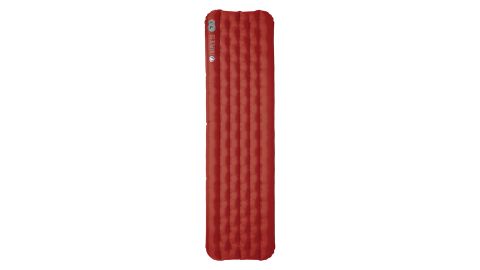
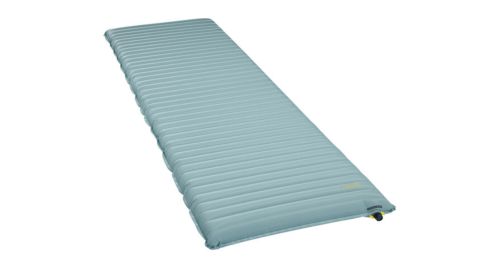
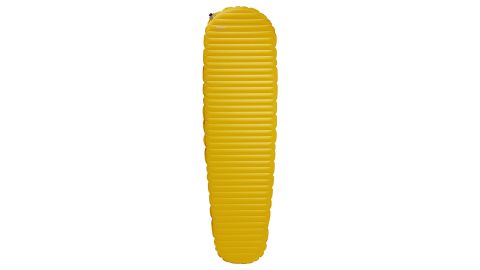
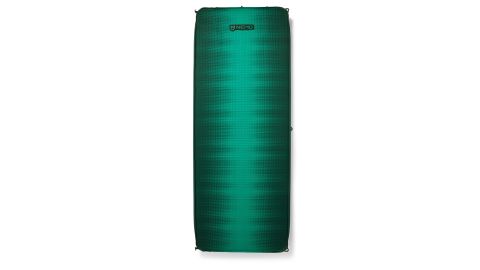


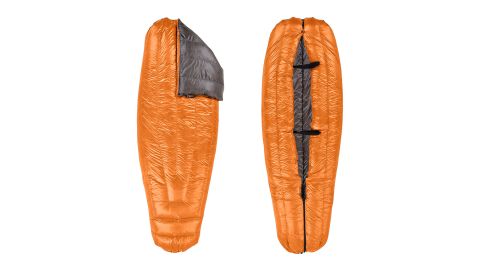
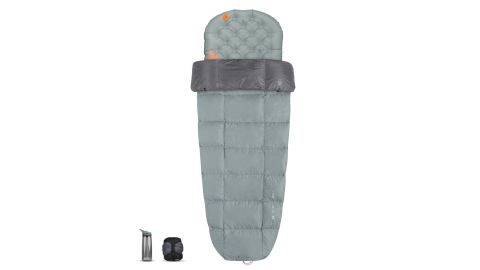
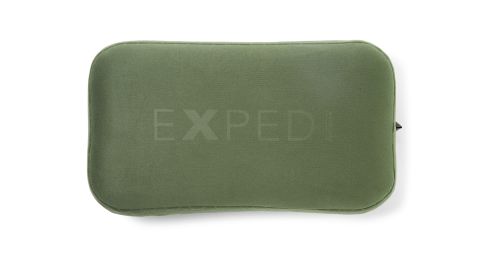
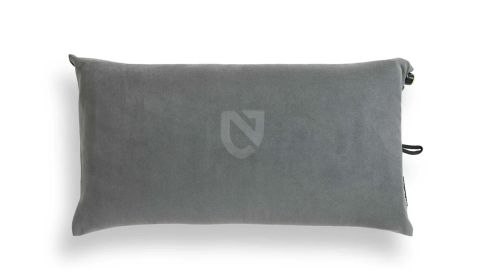
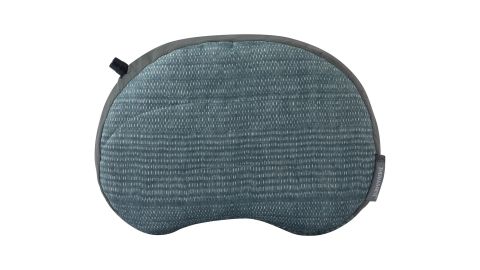
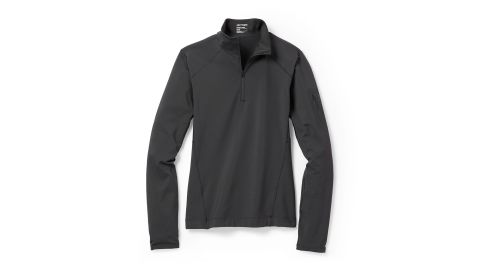
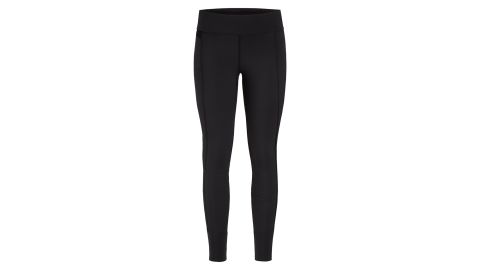
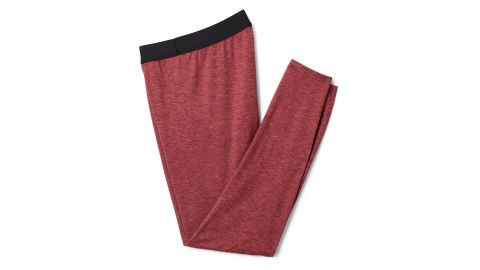
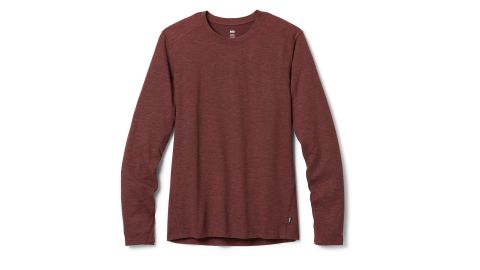
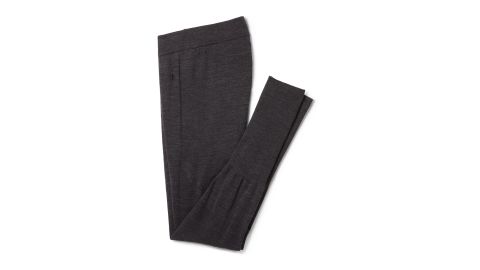


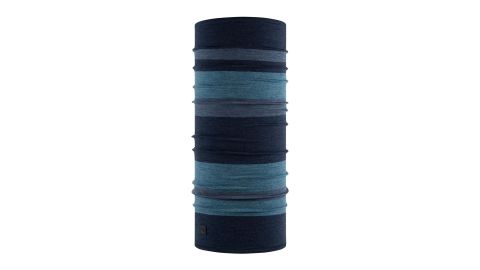
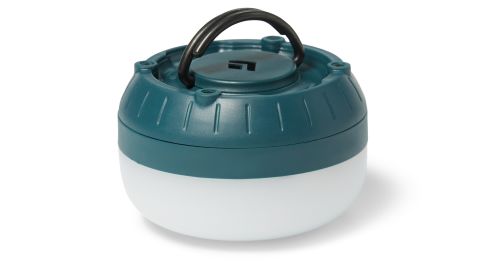
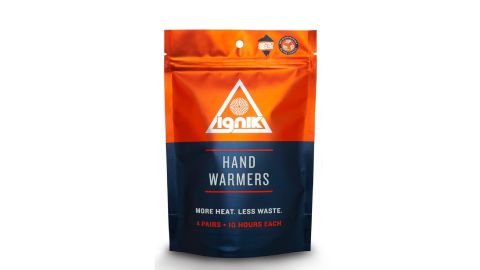









 English (US) ·
English (US) ·